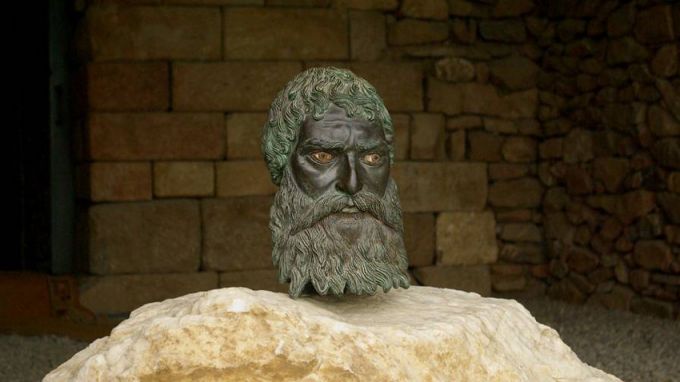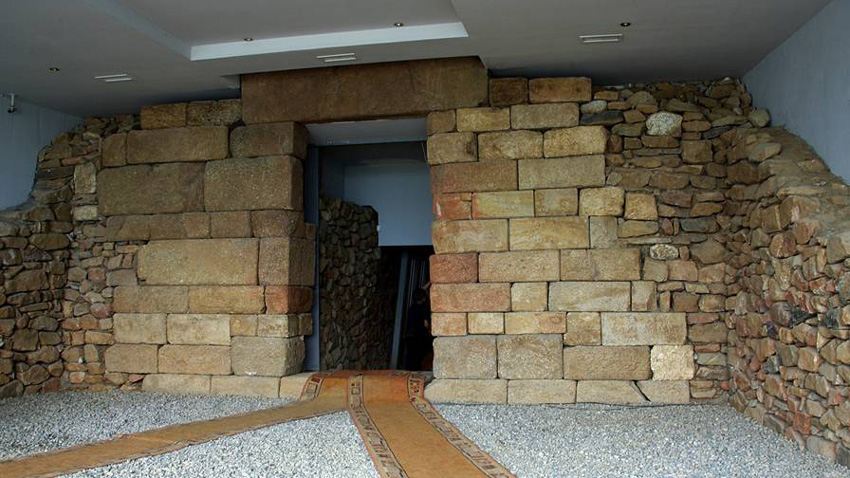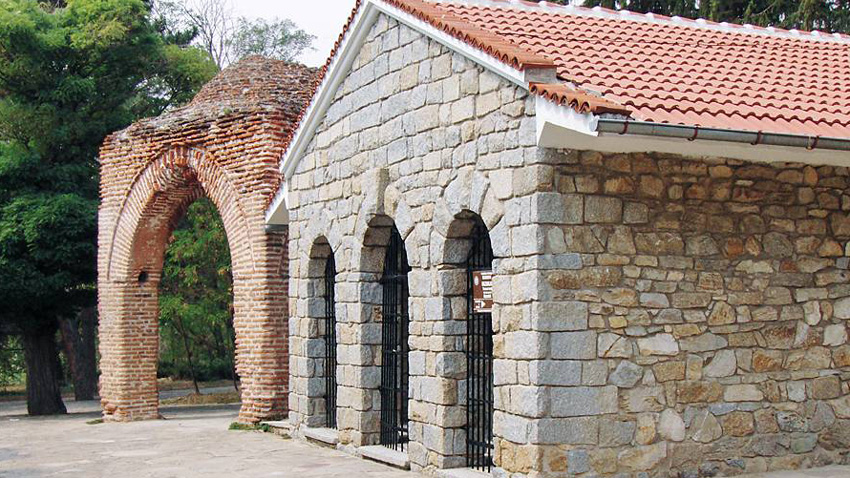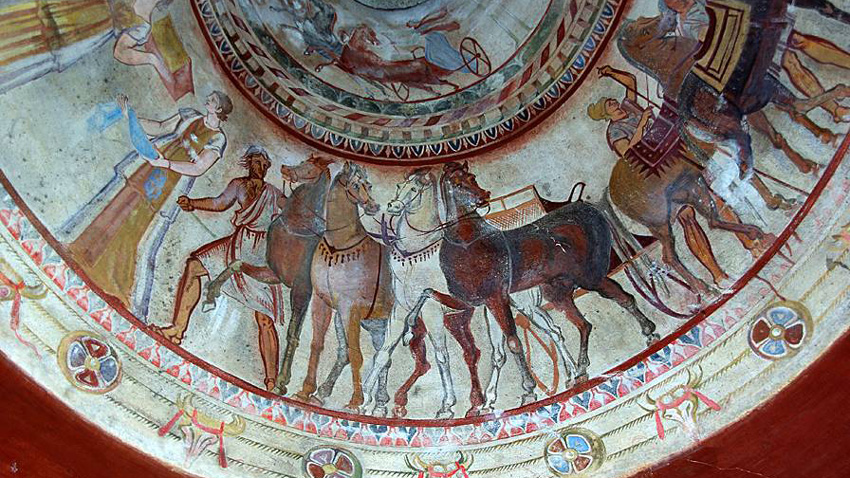
Tucked away between two mountains – Sredna Gora and the Balkan Range – unfolds the valley of Kazanluk where the climate is mild and the land bountiful. This is a part of Bulgaria that has been inhabited continually from prehistoric times down to our day. There are more than 1,500 monuments of culture here, among them burial mounds, necropolises, fortresses.
“The time when the area around Kazanluk was inhabited by the Thracian tribe of the Odrysians is fascinating,” says Krassimira Stefanova, chief curator at the Iskra (Spark) Museum of History in Kazanluk. “The tribe was united in the Odrysian kingdom, the credit for which goes to Seuthes III. Regrettably, his capital city, Seuthopolis is submerged under the waters of Koprinka dam reservoir. Seuthes’ kingdom only existed for a short while. After that the Thracian tribes that inhabited the territory of what is today Bulgaria went to war with each other. But of them, only the Odrysians were organized in a state of their own.”

The city was discovered in 1948-1954. Under communist rule however people gave more thought to electricity, water and irrigation than to monuments of culture. The decision was made – Seuthopolis must be submerged in Koprinka reservoir… In 1984 its water was released for prophylaxis – that was when Krassimira Stefanova and her co-worker were able to set foot in Seuthopolis:
“I must say the feeling was incredible, unforgettable. Water is a very good medium of conservation and it preserves absolutely everything: the walls, the streets, the houses. The excavations at Seuthopolis gave Bulgarian archaeology a real boost.”
The legacy of the Thracians is evident in fascinating burial mounds like Ostrusha, Shoushmanets, Golyama Arsenalka, Helvetsia, Svetitsata, Grifonite. And of course the most famous mound of them all Golyama Kosmatka – the temple to Seuthes III (330-300 BC). Last year the bronze head of the ruler was the highlight in The Saga of the Thracian Kings – Archaeological Discoveries in Bulgaria exhibition at the Louvre. But without any doubt the pearl in the crown of Thracian culture is the Kazanluk Thracian tomb, discovered in 1944 and registered in the UNESCO world cultural heritage list in 1979.

“The motives to put the Kazanluk tomb on the UNESCO list were that its frescoes are unique in world 4th-3rd century BC painting. And in truth, they are stunning. The Thracians were skilled painters but also jewellery makers. Artifacts made by them that have come down to us are also one of a kind in world art of the same period.”
To preserve the original tomb – which is in excellent condition, as Krassimira Stefanova says – a replica of the tomb was built in 1974 where thousands of tourists throng. It is a life-size copy and the frescoes are the work of a team of archaegologists led by Prof. Lyuben Prashkov. Special care is taken for the preservation of the original tomb.

“I remember entering the tomb as a child in 1966, because my late mother was researching into the frescoes – checking if there were microorganisms. She was a microbiologist,” Krassimira Stefanova says. “That was the first time I entered the Kazanluk tomb. How could I have known then that I would dedicate my life to preserving these monuments for the generations to come, to popularizing and conserving them?”
English version: Milena Daynova
Photos: bulgariatravel.org
Exactly a year ago, the Bulgarian Orthodox Church established a new holiday in the church calendar - the Glorification of the holy relics of Saint Euthymius, Patriarch of T a rnovo . According to church sources, the last..
They call Nikopol “the town of ages” because its history goes back thousands of years. It was founded as a settlement in the year 169 during the reign of Roman Emperor Marcus Aurelius. In 629, theByzantine Emperor renamed the town to Nicopolis, meaning..
There are rumours and speculations that some forgeries, so good that they are not inferior to the originals, could be found among the exhibits in the museums, but at the moment a whole series of forgeries can be seen at an exhibition..
On November 22 and 23, the Bulgarian Orthodox Church will solemnly celebrate the 100th anniversary of the consecration of the Patriarchal Cathedral "St...
The Patriarchal Cathedral of St Alexander Nevsky is celebrating its temple feast today. The cathedral, a symbol of the Bulgarian capital, was built "in..

+359 2 9336 661
